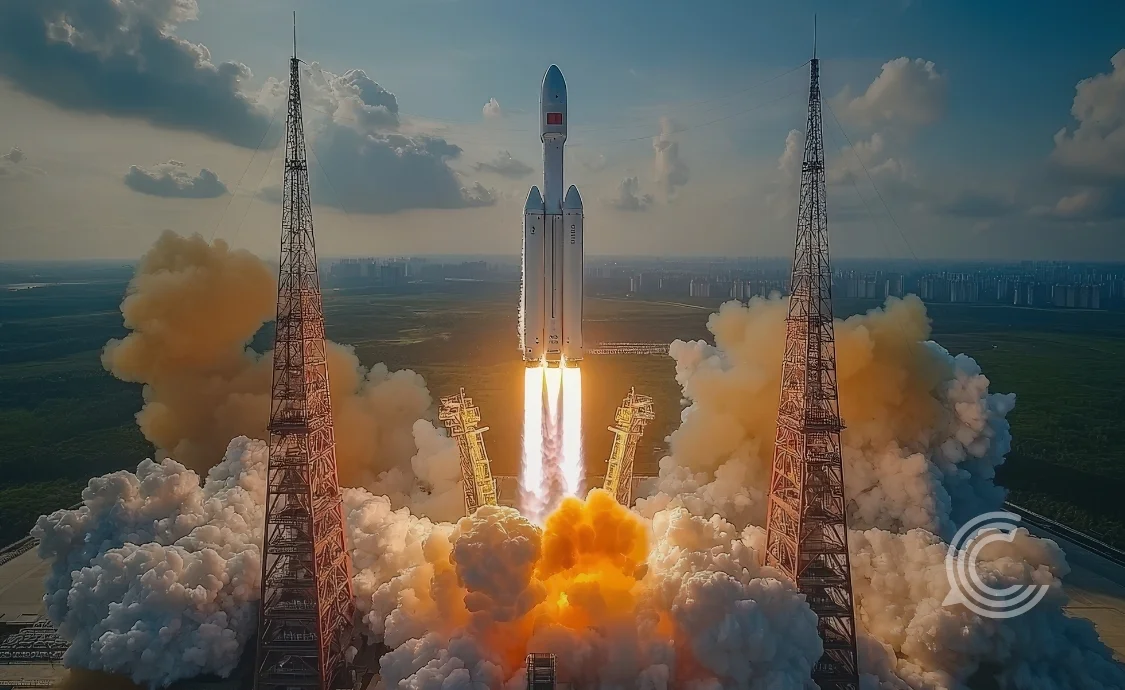China Launches First Emergency Mission to Tiangong After Capsule Damage

Key Highlights
- China launches its first-ever emergency spacecraft, Shenzhou-22, after damage to a return capsule raised safety concerns.
- The unmanned vehicle will restore evacuation capability for three astronauts aboard Tiangong.
- Beijing’s rapid 16-day turnaround highlights China’s increasing pace of space launches, with multiple similar missions conducted over recent years.
China has carried out its first emergency mission in space, sending the Shenzhou-22 spacecraft into orbit to restore a safe return option for the three astronauts living aboard the Tiangong space station.
According to Reuters, the unmanned vehicle blasted off at 12:11 pm local time on Tuesday from the Jiuquan Satellite Launch Centre in northwest China, atop a Long March-2F rocket.
China Launches First Emergency Mission to Tiangong After Damage to Return Capsule
Footage released by state broadcaster CCTV showed the rocket tearing through the sky before Earth curved into view as the craft entered orbit. The China Manned Space Agency (CMSA) confirmed shortly after liftoff that Shenzhou-22 had separated from its booster and “successfully entered its planned trajectory,” calling the mission “a complete success.”
The emergency deployment follows the discovery by CMSA that the Shenzhou-20 return capsule, scheduled to bring a trio of astronauts home on November 5, had suffered a cracked window, likely caused by orbital debris. With the spacecraft deemed unfit for re-entry, the agency found itself facing a rare scenario: three astronauts aboard Tiangong without a flightworthy return vehicle, an unacceptable safety risk under Chinese spaceflight standards.
How the Emergency Unfolded
China moved quickly once the damage was confirmed. On November 14, it repurposed the only available flightworthy vessel, Shenzhou-21, which had just docked in late October with a new crew. That spacecraft, originally meant to remain for six months, departed the station only weeks into its mission to bring the Shenzhou-20 crew home.
Shenzhou-22 now arrives as the new “lifeboat” for Tiangong’s current residents. CMSA official He Yuanjun told CCTV, “This emergency launch is a first for China, but I hope it will be the last in humanity’s journey through space.”
The supply manifest reflects its dual purpose: spare parts to repair the Shenzhou-20 capsule’s cracked window, equipment for on-orbit maintenance, and fresh fruit and vegetables for the crew. The spacecraft will stay docked until April 2026, when it is scheduled to ferry the Shenzhou-21 astronauts back to Earth.
Why China Pulled This Off So Quickly
Ever since Tiangong became permanently inhabited in 2021, Chinese protocols have required a standby crewed spacecraft and a carrier rocket to be permanently stationed at Jiuquan. That preparation proved decisive: CMSA says it took only 16 days from initiating the emergency plan to executing the launch.
The speed of China’s response stands in contrast to NASA’s recent dilemma. The US agency dealt with two astronauts stuck aboard the International Space Station for nine months due to propulsion problems with their Boeing-built Starliner capsule, a case widely reported across US media outlets. Beijing’s methodical readiness, according to analysts cited by Reuters, highlights its increasingly sophisticated operational playbook as China and the United States compete to land astronauts on the moon by 2030.
Other Similar Launches by China
While Shenzhou-22 marks China’s first emergency mission, the country has been carrying out a steady tempo of crewed and cargo launches to Tiangong. Missions such as Shenzhou-19 in October 2024, Shenzhou-20 in April 2025, and Shenzhou-21 in October 2025 reflect a pattern of regular, rapid launch cycles that keep the station staffed continuously.
These missions have followed a similar playbook. Trios of astronauts sent for six-month rotations, supported by backup rockets and spacecraft already stationed at Jiuquan.
Since these missions occur so often and have clear procedures, the emergency deployment was possible very quickly.



